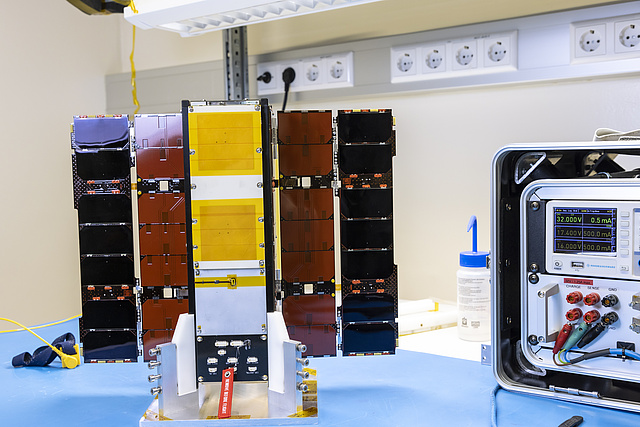The satellite
The spacecraft is a 3U CubeSat equipped with deployable solar panels and consists of several modules. Some components of the satellite are procured from third-party manufacturers as so-called commercial off-the-shelf products. This concerns the communication systems, the main computer and the attitude control system. The Payload Processing Platform, which was also used in the OPS-SAT mission, was developed by the Institute and adapted into a new version for PRETTY. The Software Defined Radio Module, which serves as the main receiver for the Passive Reflectometry, was also developed at the Institute. The dosimeter payload is developed by Seibersdorf Laboratories.

The payloads
Primary Payload – Passive Reflectometry
The primary payload of Passive Reflectometry consists of the Satellite Experimenters Payload Platform (SEPP), the software defined radio module (SDR) and a dual patch antenna. The two patches are connected to the two inputs of the SDR and the received signals are sampled. By selective phase shifting between the two patches, a beam steering on the horizon can be achieved between the direct signal through the GPS signal as well as the reflected signal at the reflection point on earth. The sampled signals are then processed at the SEPP in specially developed software and the altitude measurement is thereby achieved.
Secondary Payload – Dosimetry
The satellite's second payload is a dosimeter system. This measures the radiation levels and references them to certain positions in the orbit. The dosimeter payload provides two types of radiation integrating sensors that will provide information regarding total ionizing dose (TID) deposited in electronic components that are: (1) RADFET and (2) FGDOS in shielded and unshielded configuration. Further, it is planned to realize an SEU assessment system based on commercial SRAMs as in-kind contribution by SL, depending on available resources.
